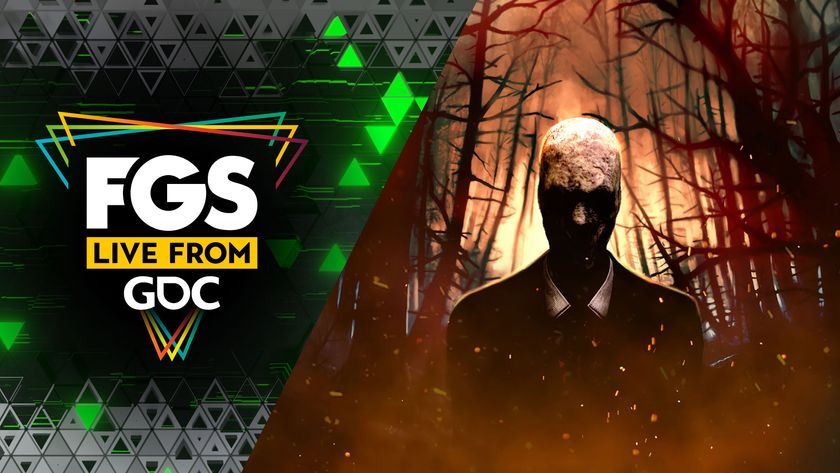Apple Vision Pro: Everything we know from price, to specs, to release date
Apple's long-awaited ski goggles are set to take the VR market by storm
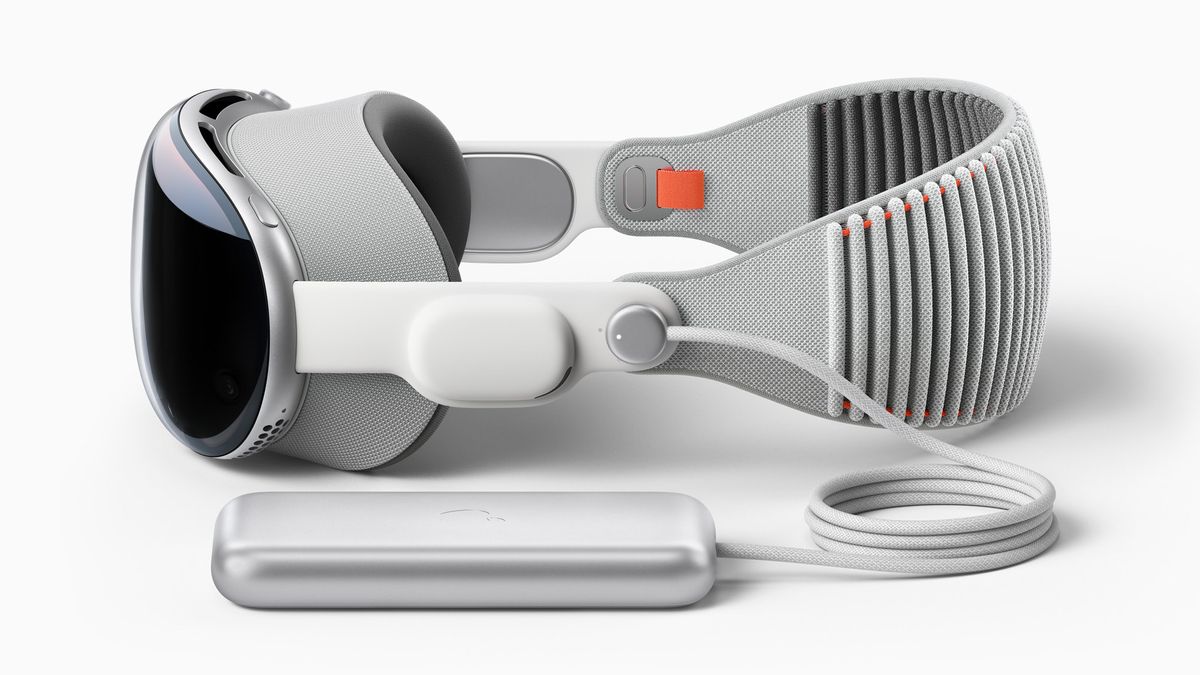
The Apple Vision Pro is getting closer by the day as we get further into 2024. We've just learned that the new headset will be available in the US on February 2, with pre-orders beginning January 19. If you can afford this seemingly revolutionary visor, it might be time to get excited. Before you click that buy now button though, we've rounded up everything we already know about Apple's latest innovation.
To begin with, Apple Vision Pro is a new mixed-reality headset that takes many of the features we know and love from the best VR headsets and blends them seamlessly into the Apple ecosystem. Mind you, this isn't your run-of-the-mill VR headset. Mixed reality features bring it more in line with the Meta Quest 3 and even the Meta Quest Pro - but to an even more extreme degree. This headset doesn't even have accompanying controllers, so it really is setting up a league of its own.
Apple Vision Pro will set you back an unheard-of $3.5 grand and will only be available in the US when it launches. While early impressions from hands-on testing sessions have been positive overall, it remains to be seen what kind of market this new headset will land itself in due to that very restrictive price tag. With the closest rivals being around the $1,000 mark, Apple's offering is certainly setting itself above and beyond out of the gate.
We now know even more when it comes to features and content planned for Apple's first visor. To read up on everything we know about the new headset, let's go for a scroll.
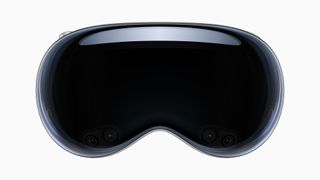
Apple Vision Pro: Key features and specs
Perhaps most notably, Apple Vision Pro will feature two Micro OLED displays that pack a quite stupendous 23 million combined pixels into the headset. These are visible through the device's custom catadioptric lenses and will result in an ultra-high-resolution display that Apple says will give "more than a 4K TV per eye" in terms of resolution.
For glasses wearers, Apple has prepared ZEISS prescription inserts that will allow you to use the headset without trying to cam your glasses into it as well. We now know that these will set you back an additional $99 for reading inserts, or $150 for general ones. Given the already high cost of the headset, those additional charges aren't the most encouraging. Luckily, if you're worried about value, we recently learned that the headset comes with a front cover and a polishing cloth worth $19 which you get at no extra cost - so at least you're getting a bargain there.
Annoyingly, we don't have a specific FOV or refresh rate yet, although, from the figures we do have, we can guess that it'll be around 100 degrees horizontally and 90Hz - keep in mind that these are estimates though. Similarly to the Meta Quest 2, the Apple Vision Pro will come with 256GB of storage, although, unlike Meta, there's only one SKU, meaning there's no larger storage option.
Sign up to the 12DOVE Newsletter
Weekly digests, tales from the communities you love, and more
Whereas other VR headsets have cameras on the front of the headset (PSVR2 has 4 frontal cameras, for example) Apple Vision Pro features laminated glass on its outside which allows the device's 12 cameras and five sensors to track the user's surroundings. This glass outer additionally acts as a display for non-users in its own right and will display the user's eyes if they're using Vision Pro in AR mode. Meanwhile, it will display funky colors if they're fully immersed in VR - so you know, your friends will know whether or not they can jump-scare you. This glass is backed up by an aluminum alloy frame, which, from initial hands-on tests, has been reportedly heavy on the face.

Luckily, Vision Pro seems very comfortable thanks to a 3D knitted headband that pairs with a "Light Seal" which is soft and textile, meaning you can presumably wear it for long periods since it'll be a breathable, cushioned fabric. New info states that there will be the option of two different headbands, one that's seen in trailers that goes around the user's head, and one that has a top band that's similar to a typical Quest headset. Found on the headband and bottom of the visor are some vent spaces, although it's unclear if these are for dedicated fans or general ventilation. One useful feature is that there's a "digital crown" dial on the side of the headset that you can turn to control the amount of augmentation to your surroundings. This is a neat trick and is mainly confined to a software "passthrough" or "no passthrough" function in rival devices.
A separate battery pack that you can hook up to the device is said to be able to power the device for only two hours. This tethers to the side of the headset via a threaded wire, and can fit inside a pocket since it's roughly the same size as a phone. Keeping the battery off of the headset itself means more weight distribution and presumably a comfier fit. Reportedly, the headset can be plugged in and work via a powered connection to a wall too. Having said that, it doesn't seem as though you'll be able to tether it to the best gaming PCs.
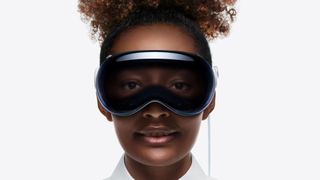
Also embedded onto the headband are two Spatial Audio speakers which Apple says will be able to create the feeling that sounds are coming from the environment around the user. Two amplified drivers inside each of these audio pods will supposedly work to suit each user's head and ear geometry. For playing games, this will surely be a great benefit.
Apple Vision Pro is controlled solely by gestures and pinch controls and operates with eye-tracking and voice commands. For those wondering, yes, this does mean foveated rendering, which means Apple Vision Pro will prioritize what the wearer is looking at and render that thing at a higher resolution. All of this runs via Apple's new M2 and R1 processing chips and operates on a brand new OS called Vision OS. This will let you scroll through apps with your eyes, scroll down with the flick of a wrist, and even search by looking at a search bar and starting to speak.
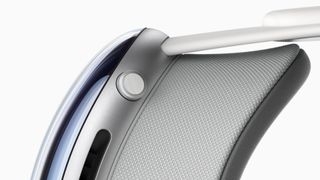
Apple Vision Pro: Price and launch date
Apple Vision Pro will launch in worldwide markets, but will initially only launch in the US in early 2024. Pre-orders will be available from January 19, for an initial US launch on February 2. For starters, it seems as though the headset will only be available through US Apple Stores both at retail locations and online. Pre-orders will be open from 5 am PST on Friday the 19th.
Later markets will see availability later on in 2024, according to Apple. One Apple Vision Pro will set you back $3,499, which is almost $2.5 grand more than the Meta Quest Pro or HTX Vive XR Elite when they launched.
Privacy
If you're like me, your biggest concern with this type of mixed reality device is the potential privacy infringements that come with it. Particularly when I reviewed the Meta Quest Pro, I had a lot of problems with it trying to access more data than I felt it needed to, especially when, for example, I started getting targeted ads on social media for whatever object the headset had been pointed at while I wasn't using it.
Apple, however, doesn't have as bad a reputation when it comes to user data and privacy, so you'll be glad to know this seems like an issue it's taking seriously with this futuristic device. Apple's press release states "Apple Vision Pro is built on a strong foundation of privacy and security and keeps users in control of their data.
"Optic ID is a new secure authentication system that analyzes a user’s iris under various invisible LED light exposures and then compares it to the enrolled Optic ID data that is protected by the Secure Enclave to instantly unlock Apple Vision Pro. A user’s Optic ID data is fully encrypted, is not accessible to apps, and never leaves their device, meaning it is not stored on Apple servers."
Further, user data as to where adopters look, as well as data from their surroundings, will not be stored or transferred to third-party apps and developers, which is a serious plus. These things are processed within the hardware and never need to be stored in the cloud. Supposedly, EyeSight, the headset's outer display panel that shows those weird eyes, will make it clear when spatial video or photos are being recorded.
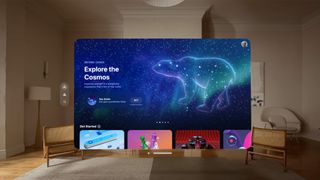
Games, content, computing, and other uses
During the announcement video, it was revealed that you can connect a Macbook, Bluetooth keyboard, or one of the best PC controllers to Apple Vision Pro. In fact, the DualSense made a brief appearance as an example of a gamepad that would work with it, as someone played an NBA game with the goggles on.
We know that Unity is able to create content for the device, as early reveals showed that as a starting point for developers. Other than that, we now know that gamers will be able to access more than 250 titles available through Apple Arcade. Games like NBA 2K24 Arcade Edition, and Sonic Dream Team are playable with a connected controller. Meanwhile, Game Room, What the Golf, Super Fruit Ninja, and Demeo, are all confirmed to make appearances on the Vision Pro.
Given Apple's long-running rivalry with Microsoft, it's highly unlikely we get an Xbox Game Pass app on Vision Pro like we've seen on the Meta Quest 3 in recent months. That said, we could see some sort of collaboration between Apple and PlayStation, particularly as there was a DualSense spotted in the reveal trailer.
Certainly, more than the Meta Quest 2, this one looks to be more about broad computing and general use than it does full VR gaming. Knowing Apple's history of being a fairly fenced-off ecosystem when it comes to games, we aren't expecting large numbers of VR games to be ported to it, although this really does remain to be seen.
Below, we've listed some of the example uses Apple has told us about that work with the Vision Pro.
Vision OS for general computing and working
VisionOS allows you to augment your surroundings by layering work, browsing, messaging, or even your Macbook's display in full stereoscopic 3D layers - as you can on the meta Quest Pro for example.
Immersive environments
With Environments, you can establish what virtual surroundings you want to escape to. Twisting the digital crown dial lets you set how integrated into these spaces you'd like to be.
Watching entertainment
Using Vision Pro's micro-OLED displays, you can watch all sorts of content on a projected screen. Using the "crown", you can control how integrated that content will be in your surroundings, or set your surroundings to be appropriate to what you're watching. You can also set the size of the screen like with PSVR 2's cinematic mode.
FaceTime
Using a scan of your face, Vision Pro will create an uncanny valley 3D avatar of the user, and will allow them to participate in FaceTime calls while using Vision Pro. These calls can be integrated into VisionOS, be scaled up or down to lifelike size if desired, all the while the user will be represented in the call by their avatar.
Mindfulness
One of the integrated apps that seems to be shipping with Vision Pro is a mindfulness meditation app that will let you have serene meditation environments. This is just one of many Apple-created apps that features in the trailer.
Spatial recording
The example for this shown in the announcement video was of a father (we hope) recording Spatial videos and photos of his kids (again, we hope they were his). These can then be revisited later as 3D content, and relived as though they were memories.
"More Apps"
As we're still a ways out from Vision Pro's release, it remains to be seen what sort of content and experiences the platform will get. With time for apps to be developed before the initial US launch, there could be plenty of VR-type experiences to come. Equally, there may not be, as we've seen with other MR headsets.
Today's best VR headset deals
Happy to stick to regular computing for now? Take a look at the best gaming PCs, the best gaming monitors, and the best gaming laptops.
One of my earliest memories is playing SuperMario64 and wondering why the controller I held had three grips, but I only had two hands. Ever since I've been in love with video games and their technology. After graduating from Edinburgh Napier University with a degree in Journalism, I contributed to the Scottish Games Network and completed an Editorial Internship at Expert Reviews. Over the last decade, I’ve been managing my own YouTube channel about my love of games too. These days, I'm one of the resident hardware nerds at 12DOVE, and I take the lead on our coverage of gaming PCs, VR, controllers, gaming chairs, and content creation gear. Now, I better stop myself here before I get talking about my favourite games like HUNT: Showdown, Dishonored, and Towerfall Ascension. Location: UK Remote

